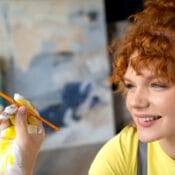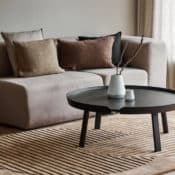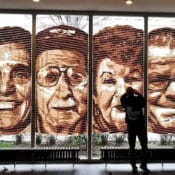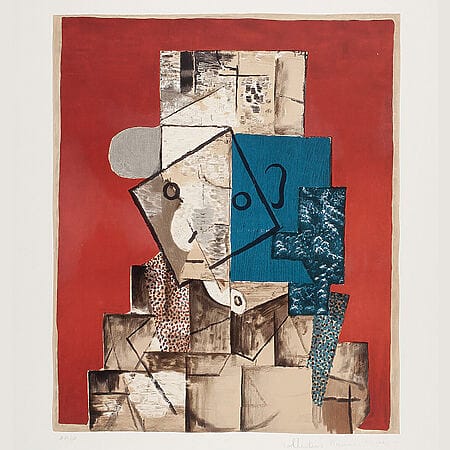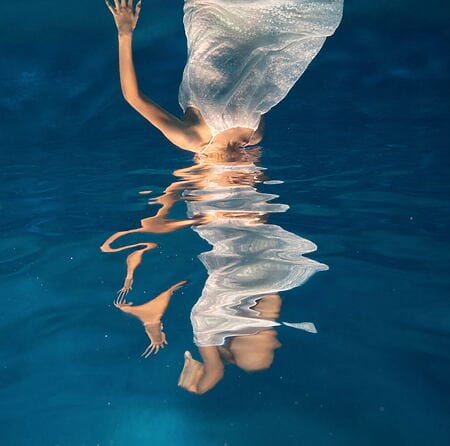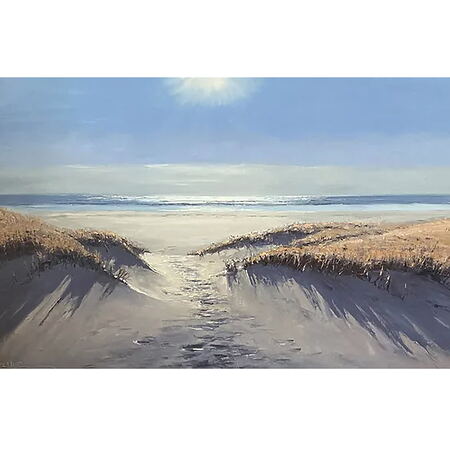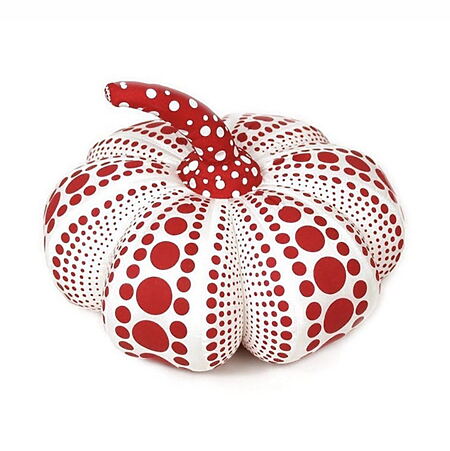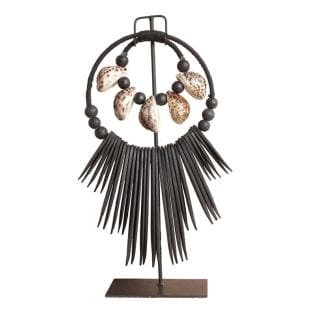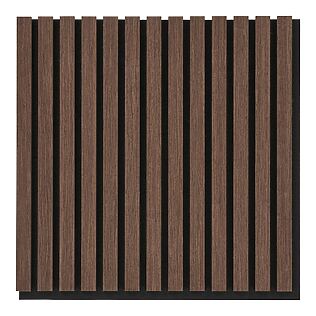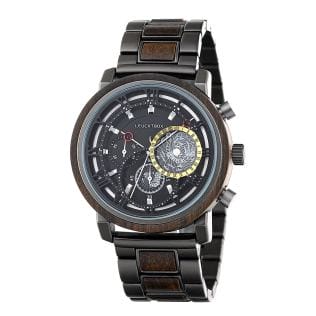Today we get insights into the artist apartments and studios of well -known artists and creatively creative. Learn more about the inspiration and creative process of these artists and how you and your living space are mutually dependent.
At home with the creators of the art world
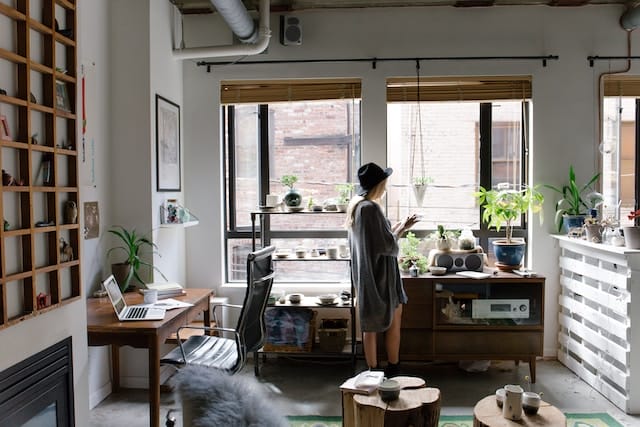
Photo by Bench Accounting @Benchaccounting, via Unsplash
In this article we start an exciting and insightful journey into the private living environment of some well -known artists and how these rooms influence creative process
Some exemplary artists we will look at are Cevin Parker, Tomaz Veber, Sylwia Synak, Paul Schrader, Nicola Metzger and Danh from.
Each of them has found their own unique style and expression in the art world. In Germany there are some remarkable artistic refugees that we will explore. Including the studios of Cevin Parker and Tomaz Veber .
There you will find the necessary calm and inspiration to work on your works and to realize your artistic vision. Other inspiring artist apartments can be found at Sylwia Synak in Munich, Paul Schrader in Hamburg and designer Nicola Metzger in Berlin.
The vibrating art scene and the multicultural atmosphere of these cities offer the artists a wealth of influences and ideas that can flow into their creative works.
concept artist Danh Vo near Berlin also found his artistic niche in rural areas Surrounded by the beauty of nature and far from the hectic city life, the Vietnamese has settled on an idyllic manor in order to create its art in harmony with the natural surroundings.
These artistic refuges not only offer artists a place to work, but also a space for self -reflection and personal growth . The studios of Parker, Veber, Synak, Schrader, butcher and VO are places of inner contemplation and creative experimentation.
Here you can edit your ideas and further develop your artistic skills. In the next section of our article, we will go into more detail about the importance of these creative refuge for the artists and examine how to use these rooms to create new creations.
The importance of the creative refuge for artists
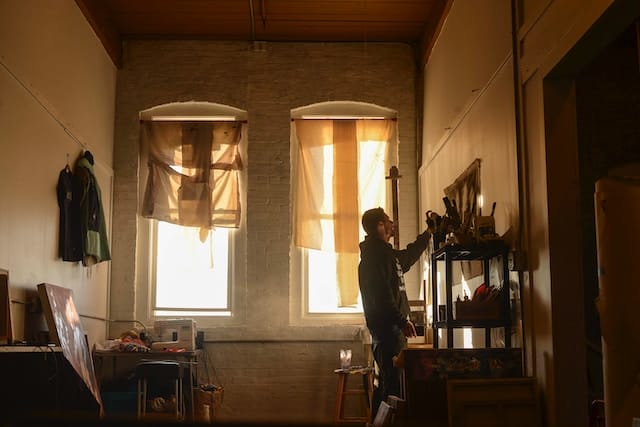
Photo by Joseph Defrancisco @joey716, via Unsplash
The importance of the creative refuge for an artist cannot be underestimated. It is a place where you can withdraw and concentrate entirely on your art. Here you can develop freely, experiment and try out new techniques. It is a room in which you can fully express your passion and talent.
The environment in which an artist works also has a big influence on its art. The culture and landscape of a country can be an inspiring source and open up new perspectives. For example, some artists from Germany move to other countries to find new inspiration.
They immerse themselves in foreign cultures and can be influenced by the atmosphere and flair of a place. The experiences and impressions you gain on your travels then flow into your works of art.
The creative refuge of an artist is therefore not a place of isolation, but a place of freedom and artistic expression . It enables the artist to detach themselves from external distractions and to concentrate fully on his art. It is a room that inspires the artist and encourages him to expand his creative limits.
And even if every refuge is unique, everyone has one thing in common: they are the retreats in which the artists let their art come alive and express their passion in impressive works.
Accompany me on this exciting journey through the living and creating world of talented art creators and be inspired!
Atelier visits and room tours with 6 known artists
Cevin Parker - Between minimalism and creative chaos
Let's start our journey in the federal capital. More precisely in the four walls of the Berlin painter Cevin Parker .
Cevin Parker, a gifted artist from Berlin , now opens not only the doors of his studio, but also that of his apartment, in which he lives together with his loyal companion Franky, a dog. As an artist, Cevin's lifestyle is characterized by creative freedom and the city of Berlin is a real after -school care for him.
Art has been a constant in his life, and difficult experiences have made it even more important. Although he has no art degree , he dared to be an artist and has become successful.
Our journey begins in the artist's studio . Here Cevin Parker can chaotic , spill colors and let everything lit around. His 48 square meter apartment, which he minimalist and tidy, A contrast that makes you curious.
The Berlin artist's apartment is cleverly divided: the main room consists of a spacious kitchen and a living room. But the kitchen is hardly used - Cevin Parker prefers to eat with friends in the city. His living room acts as a small art gallery in which he exhibits and looks at his pictures.
In the bedroom, Cevin Parker worked extensively with lowboards to make optimal use of the space. But the most important thing for him is the comfortable bed – a place of rest and relaxation. For the artist, his home one thing above all: an oasis of peace, far from stress and hustle and bustle.
Here he can simply be himself. His apartment mirrors T against his character - a combination of a minimalist design and selected objects, designed according to feeling instead of a plan.
Like art, furniture for Cevin Parker is something special. Something you have for a long time and appreciates. Creativity and art run through his whole life and also influence his facility.
Room tour at Tomaz Veber in Stuttgart
At the beginning of the year, the house construction heroes their spectators on a very special tour through the premises of the talented artist Tomaz Veber in Stuttgart .
in his charming 100-square-meter, 2.5-room apartment in a period building, which he shares with his roommate Jonas. Let's explore together how Tomaz combines his living space and his artistic work, where he finds his inspiration, and how he furnished his apartment.
The apartment itself is located in an apartment building dating back to 1950 and comprises four floors plus an attic. From the outset, it was essential for Tomaz that the apartment be completely renovated to meet his requirements for a period building with high ceilings and parquet floors.
And indeed, the apartment turned out to be a stroke of luck, as such a perfect combination of old-world charm and modern comfort is not easy to find in Stuttgart.
Together with Tomaz as artistic host, the house-building heroes will show you his unique apartment in an exclusive room tour (see the following video).
As an artist, he has a unique vision for his home's design, and he began to dream as soon as he saw the floor plan. His impressive, colorful, and expressive artwork adorns the walls, requiring restrained color schemes and furnishings.
Tomaz incorporates his creativity into the interior design and engages in upcycling . With great attention to detail, he polishes old furniture and gives it a new lease of life. The dining room chairs and dining table are his own creations. He also believes that stucco elements are an essential part of an old building, and he subsequently added them to the ceiling lights using Styrofoam elements and a heat gun.
Lighting made from two hula hoops or a self-cast concrete block with a halogen bulb are just a few examples of his creative lighting design. Tomaz also designs flowerpots, vases, and doorstops himself, always focusing on upcycling.
Tomaz has deliberately chosen not to have a separate studio . His goal is to be able to spontaneously create at any time, without having to make the arduous journey to a studio. Therefore, he simply paints in his bedroom, right next to his bed. When he can't sleep at night, he uses the time to let his creativity flow.
He does not particularly make sure that color blobs are created on floors, walls or curtains - for him, after all, these are all the objects that can sometimes tolerate some color. Only with longer, planned sessions does he make a film to protect his apartment.
In addition to painting, Tomaz also uses his apartment as a gallery . He enjoys inviting interested parties to experience his artwork in a real living environment. It's important to him that his paintings can unfold their full effect. By combining his apartment and studio, he has created another advantage.
With painter Sylwia Synak at home - now it's getting colorful!
Join the Westwing as they visit intuitive painter Sylwia Synak. In the following video, she'll not only give us a tour of her colorful apartment but also show us her studio.
Sylwia is a professional artist who specializes intuitive painting This means that she does not plan any concepts or pictures in advance, but simply projects her feelings onto the screen . Since 2013 she has been painting exclusively with a spatula that, like Gerhard Richter, enables her to be unique.
She also mixes her own acrylic pigments to precisely determine the consistency of her paints. Essential elements in her abstract artworks are gold pigments and flakes, as well as natural materials like sand . She mixes these freshly in her bright studio to create her own colors.
Sylwia attaches great importance to creating places in her home where she can withdraw and relax. In doing so, she combines her love for order with her chaotic side and integrates both opposites into her four walls.
It's important to the abstract painter to create bright and airy spaces. White furniture and colorful decorations transform her abstract artworks into ever-changing interior inspiration . Sylwia is intuitive not only in art, but also in interior design.
She hangs vibrant paintings to reflect her mood and loves to constantly redesign her spaces. With her modern artwork, mirrors aims to bring joy to others and inspire them to pause and recharge.
Paul Schrader - the unusual artist and his refuge in the far north
In the far north of Germany, Paul Schrader the popular painter of the hour. AD team was able to visit him for the series #thirtysomething in his home, a real backyard oasis that is rarely found in big cities.
On a quiet street near Hamburg-Altona and the Schanze district, Paul Schrader lives in the second-to-last house and stands in the conservatory in front of one of his sold works. Almost all of the 40-year-old painter's works have long since been sold, underscoring his popularity and success.
Schrader is currently on everyone's lips: a lawyer who gave up his job to become an artist – and was unexpectedly successful. Even he himself was surprised by how naive and naive he was at the beginning of his artistic career. Schrader hosted his first exhibition in his three-story house and attracted 100 guests. One guest even bought a painting for €1,000 that night. His works are now traded for five-figure sums.
Schrader himself says he never imagined his art would be worth so much. For him, it was always simply an expression of his own emotions and thoughts on canvas or paper. But over time, he realized that many people are drawn to his works and are willing to pay a lot of money for them.
But Schrader remains humble and down-to-earth. He continues to work hard on new projects and doesn't let his success distract him. His art remains a way for him to express his innermost feelings—whether they sell or not.
And yet, Schrader's success also has something inspiring about it: It shows us all that it's possible to realize our dreams—if we only have the courage to do what we truly want. Because ultimately, life is about being happy—regardless of whether you work as a lawyer or an artist.
In an interview with AD , the painter prize that the house was once a factory hall in a back yard . Although he claims that fish cans were once produced here, he is not quite sure. The hall originally had a length of 50 meters, but was divided into sections in the eighties and sold as five town houses. The winter gardens were added to the renovation, while the garden was previously a paved industrial farm.
The painter's mother purchased the house in the 1980s, and he has been renting it since 2012. He originally planned to move in with his ex-girlfriend, but they split up, and he suddenly had a lot of space. So the middle floor was converted into his painting room .
Paul Schrader has taken an unusual path into the art world. At the end of 2018, he gave up his job as a lawyer and dared to jump at an art academy without training. Already as a teenager, he experimented with graffiti and presented his art on public walls. Later he even did commissioned work, such as spraying an entire house wall with his crew in Dresden.
In his artist apartment, the Hamburg painter spends most of the time in or on the bed where he can look at the sky. When it rains, he prefers the winter garden. Or he relaxes on the comfortable " Nebula Nine" sofa from Moroso , which he bought shortly after his termination. To do this, he borrowed the money from his mother and paid it off for over a year. The "Eames Lounge Chair" has only been there for a year or two, but it has always been a dream of him. In his narrow apartment it fits perfectly with the rest of the interior.
ONE Hamburg visited the artist Paul Schrader in his home studio and had the chance to look behind the scenes:
Designer studio by Nicola Metzger - Living and working under one roof
Nicola presents our designer studio in the heart of Berlin. Here she deliberately combines her professional life as a sustainable fashion designer with her private living area. In order to get the best out of her designer loft, in which she not only designs new collections, but also lives, she used some clever furnishing tricks . The result: living and working under one roof!
Nicola's designer Atelier mirrors T resembles her joy and positivity. As a designer for sustainable fashion, she likes to surround herself with many colors and unusual patterns to make her home a special place. In order to optimally use the limited place in its 55 square meter apartment, it has set up various areas and created a lot of storage space through high shelves and clothes rods.
Nicola's workplace is located directly opposite the kitchen in her Berlin studio. Here she develops new designs and is inspired by everything that life has to offer. To be flexible, she has equipped her work table with roles and can easily move it and be creative. Fabrics and patterns for your towels keep them directly behind their desk, while their playful designs are sold "Nicola Metzger"
How do you manage to combine living and work under one roof? After work, Nicola always cleans up her work utensils and switches off the light in her studio area. Then she can enjoy the end of the day relaxed.
Nature and sustainable - concept artist Danh VO lives on a manor near Berlin
Danish-Vietnamese concept artist Danh VO with up to 20 people on 5000 square meters is now working and lives on a former livestock land and a heeling The Güldenhof , located north of Berlin in Stechlin, was revived by the close cooperation between the artist and the architecture firm Heim Balp .
Architect Michael Heim describes the place as sustainable and inviting for residents in order to work together and be inspired.
Behind the old stone walls from the 18th century, studios, exhibition rooms, workshops, apartments and multifunctional areas are waiting for everyone. The three -storey building in the center of the complex was completely renewed except for the outer walls and impresses with a black facade.
Architect Pietro Balp explains that the visible interventions should consciously contrast with the prevailing aesthetics.
Danh Vo's vision of giving equal space to art, nature, and history is mirrors in the estate. The architecture of the complex, both inside and out, is arranged like a collage of the spaces designed by the artist. It provides an ideal setting for the production and presentation of art.
The estate's living and working spaces are characterized by Vos's artistic approach. Artful objects, carpets, plants, and sculptures fill the rooms and tell their own stories. Even the wide wooden staircase leading to the upper part of the studio becomes an exhibition space for objects, books, and plants.
Nature plays a central role at Güldenhof . Living and artistic creation are closely connected to nature, which was also important to the architects. Michael Heim particularly likes the old stable, which was gutted and converted into a large greenhouse with a new wooden structure and translucent panels.
In addition to the extensive greening, the room also serves as a meeting place and events take place there regularly in summer. There is music, performances and culinary experiences for the public, far from the big city.
There’s all this nonsense that art bridges!”
Meet the Danish-Vietnamese artist Danh VO in his studio between a chicken farm and a compostation outside of Berlin.
Danh Vo's art includes dismembered religious sculptures, old American flags, and his grandmother's washing machine. By using objects from his childhood in a devoutly Catholic household and presenting them in a white-cube gallery , he aims to unsettle people. He wants to make them question their knowledge.
Everyone is born under systems,”
says VO and continues:
Someone created what you should do and think. And that makes me very skeptical."
In VOS works you can often find a comparison of objects.
Contradictions are very real in every person’s life.”
Danh vo argues that we learn that life should be harmonious, which is rarely the case. He tries to project this into contrasting pieces, for example at the work of your mother Sucks Cocks in Hell (2015) , in which an old religious wooden sculpture was merged with a marble sculpture.
Even if Danh uses personal items, it is not the goal of revealing intimacy with the viewer.
I was interested in the distance between different social groups,”
he says.
I wanted to explore the alienation that comes with entering a white cube where information is amputated. That you simply can't understand it."
Art should not be a bridge for VO, it should be strange.
Vo has presented solo exhibitions at several major art institutions, including the Royal Academy of Arts in London, the Stedelijk Museum in Amsterdam, the Solomon R. Guggenheim Museum in New York, and the Museo Jumex in Mexico City. In 2015, Vo represented Denmark in the Danish Pavilion at the Venice Biennale. Vo is the recipient of prestigious awards, including the Hugo Boss Prize (2012).
In the following video in June 2020, DANH VO was interviewed by Roxanne Bagheshirin Lærkesen for the Louisiana Channel in his studio Guldenhof in Germany:
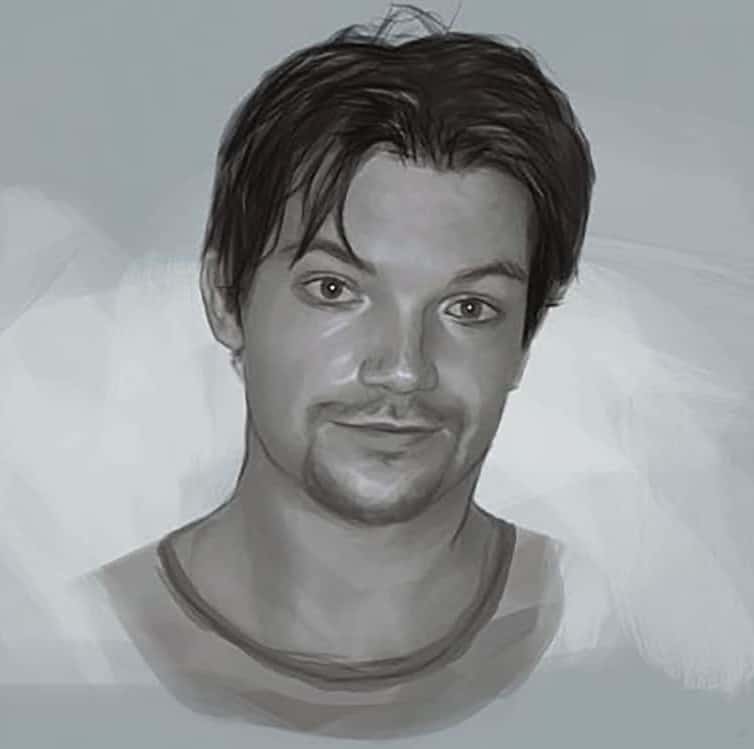
Owner and Managing Director of Kunstplaza. Journalist, editor, and passionate blogger in the field of art, design, and creativity since 2011. Successful completion of a degree in web design as part of a university study (2008). Further development of creativity techniques through courses in free drawing, expressive painting, and theatre/acting. Profound knowledge of the art market through years of journalistic research and numerous collaborations with actors/institutions from art and culture.

